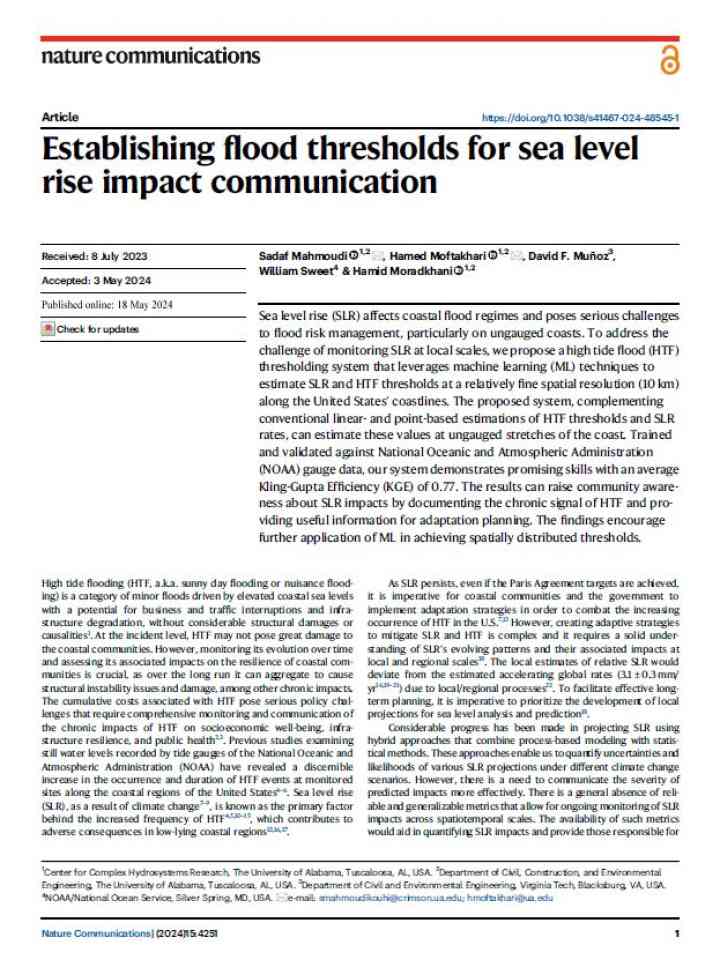Establishing flood thresholds for sea level rise impact communication
This study proposes a high tide flood (HTF) thresholding system that leverages machine learning (ML) techniques to estimate SLR and HTF thresholds at a relatively fine spatial resolution (10 km) along the United States’ coastlines. The proposed system, complementing conventional linear- and point-based estimations of HTF thresholds and SLR rates, can estimate these values at ungauged stretches of the coast. Trained and validated against National Oceanic and Atmospheric Administration (NOAA) gauge data, our system demonstrates promising skills with an average Kling-Gupta Efficiency (KGE) of 0.77.
The results can raise community awareness about SLR impacts by documenting the chronic signal of HTF and providing useful information for adaptation planning. The findings encourage further application of ML in achieving spatially distributed thresholds. The results can raise community awareness about SLR impacts by documenting the chronic signal of HTF and providing useful information for adaptation planning. The findings encourage further application of ML in achieving spatially distributed thresholds.
Explore further
